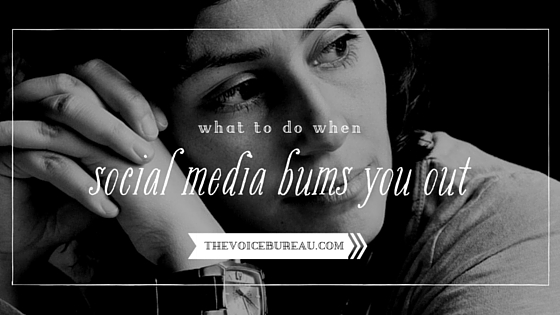A recent trend I’ve spotted among those who coach and advise microbusiness owners is the advice to survey your readers to find out what they want from you.
 The premise here is great. Any time I see someone wanting to focus their business expression on their potential clients rather than on themselves, it’s a good thing.
The premise here is great. Any time I see someone wanting to focus their business expression on their potential clients rather than on themselves, it’s a good thing.
But — is surveying your blog readership, or even your email subscriber list, a smart way to gather information?
Let’s take a look.
Chances are, if you’re doing a good job of creating high-interest, helpful blog content, you have a loyal core of readers — people who consistently read everything you publish. This core group is most likely a fraction of the traffic to your site on any given day.
Then, you’ve got a bigger group of semi-readers, who pop on and off of your site after clicking a link on Twitter or Facebook, or clicking through a pin of yours. They probably glance at your latest post for two seconds, then bounce. If it’s a particularly engrossing topic, they may read in full, but not comment or share the post. These semi-readers are not part of your loyal core, but they are moderately interested in learning more about what you have to say/teach/model/share (which is good), or in hearing your take in particular (which is very good).
You may have Right People-like buyers hanging out in both groups: the loyal core and the moderately interested peeps. Will the moderately interested peeps click through to your sales page, read or skim to the bottom, and click Buy on any given day? That’s a matter of everything from how much time they have in that moment they encounter your site, their energy level, their predisposition to be proactive (or not) about addressing a problem they’re aware they have, and the balance in their PayPal account.
But your Right People readers? The majority of the time, they will buy your offer if the timing is right (for them), if the price is right (according to the value you’ve demonstrated on the sales page and through the rest of your brand’s suite of signals), and if they believe that you see them and get them and you have the solutions they’ve been yearning for.
Whether your Right Person buyer buys what you’re offering is a function of how well you’ve communicated that you understand what they’re up to, what troubles and concerns them, what delights and serves them, and that you’ve designed this offer with them in mind.
Your brand is not a buffet.
A short personal story:
I like buffet eating. A little bit of this, a little bit of that. As a kid, one of my favorite “holidays” of the year was our annual Kerr family reunion. Why? Picnic food! Three stretches of wooden picnic table full of it. I like having options.
But great brands that get profitable are not built buffet-style.
Here’s what I mean.
Let’s imagine you’re a graphic designer. Your business is a year old and you get about 1500 unique visitors to your site every month. In the first year of business, you brought in $16,578.43 in revenue from a hodge podge of digital download products, one-to-one services for clients, and one 4-session coaching workshop that 6 people signed up for. You blog inconsistently: sometimes 4 times a month, sometimes none. You use every social media channel you can think of, but you don’t really have a plan for what you’re doing there — you’re just showing up and being warm and engaging, sharing links to other people’s stuff and occasionally to your own. You have an email list of 117 people, but you’ve never had a freebie so you have no idea why most of these people signed up to receive updates from you. You’ve emailed them only 5 times over the course of the last year.
You’re eager to grow your business and your reach, so you’ve decided to survey your blog readers to find out what they want from you, blog-wise and product or service-wise.
You post a survey on your blog, and you also email the link to your subscriber list. There are 5 questions, because you’ve read that you should keep surveys to as few questions as possible, certainly under 10. Two of your questions are multiple choice and three are open-ended. You get 38 responses over a one-month period.
Because you’ve asked so few questions, you have very little insight to work with about who these people are. (But the thought of giving them the third degree, via a longer survey or a phone call, just feels . . . weird.) Your survey tells you that only 14% of those surveyed are “currently looking for a graphic designer to work with” but 87% of them “would appreciate more free graphic downloads.” (Don’t blame me — you asked them!)
Furthermore, to your open-ended question, “What would you like me to share on my blog?” you’ve received all manner of responses, from “Photos of your creative studio, so we can see what it’s like to be you!” to “How-to articles that help me learn PhotoShop techniques” to “Top 10 lists of your favorite free iPhone apps!” to “How you got into graphic design,” “Tell me whether I need to hire a web designer or a graphic designer or both,” and “Tips for how I can start my own graphic design business, please! I want to be you when I grow up.”
Ummmmmmmmmmmmmmmm . . . that was . . . helpful (?)
The reality is, if you left your brand conversation up to people with the time and inclination to participate in a blog survey (not necessarily your Right People), and you actually implemented what they asked for, you’d be taking a huge risk: a risk that you’d miss the Important Conversations your Most Likely To Buy Person really cares about, wants to engage in online, and wants your take on.
Don’t risk turning your brand conversation into a buffet.
When surveying people can be helpful
There is one group of people you absolutely want to talk with and learn from: people you’ve worked with, who have experienced your offers first hand (i.e. purchased your digital product or hired you for a service). You’ll want to find out what drew them to the offer in the first place, what tipped them over the edge to buy, what they expected to get/learn, what they actually got/learned, and where they’d like to suggest improvements or upgrades.
Will all of your buyers be Right People? Nope. Not all buyer feedback will be useful for you in developing your brand conversation further.
That’s why it’s even more important to intimately know your Right Person — the person whose core needs and developmental desires sync up perfectly with what you have to offer, in the way you offer it.
He or she really is out there. In fact, there’s not just ONE Right Person out there for you, there are thousands of ‘hims’ or ‘hers’ hoping — in the back of their minds, if not at the forefront — to find a conversation online like the one you are uniquely designed and equipped to create and hold.
The question is: will you do it? Will you bring it?
If you’ve been following The Voice Bureau for a while, you know that I (Abby) deliver a high level service called Empathy Marketing, along with my collaborative partner, searchologist Tami Smith.
We launched the service right before the New Year 2013 and have had the awesome pleasure of unveiling Empathy Marketing strategies to 16 high integrity microbusiness owners. We listened closely to their feedback during, immediately after, and months after their time with us concluded. We heard what they told us they wanted more of, what they were empowered to implement immediately, what was most inspiring, and where they needed more support (copywriting!).
And we’ve iterated. We made Empathy Marketing even tighter, more impactful, and more immediately actionable.
We kept all of the best parts in — and made them even better. And we added a few new features we think you’ll truly dig, like ready-to-go titles for your 101-style articleseries, and grab-and-go examples of how to work deep metaphors into your copy that will speak directly to your Right Person’s core needs.
We think you’ll love looking at your business this way, and getting to know your Right Person by standing in his or her shoes. If you’re ready, please take a look at the NEW Empathy Marketing.
We’re currently booking new clients, one per week. Book soon to ensure the Start Week of your choice.
In the comments, Tami and I would love to hear:
What have you learned from surveying your own readers? Have you found a question that’s yielded particularly insightful responses? What have you NOT been able to learn about your Right People, so far?
{ 14 comments }




 Hello, you.
Hello, you.